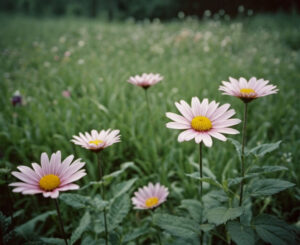Depth of field (DoF) is a crucial concept in photography, determining which parts of your image are in sharp focus and which are blurred. Mastering depth of field allows you to create more impactful and visually appealing photos. Let’s delve into the key factors that influence depth of field: aperture, distance, and focal length.
1. Aperture: Controlling Light and Focus
Aperture refers to the size of the opening in your camera lens through which light passes. It’s measured in f-stops (e.g., f/2.8, f/5.6, f/16). The aperture size directly impacts the depth of field:
- Large Aperture (Small f-number): A wide aperture (e.g., f/1.8) creates a shallow depth of field, keeping only a small part of the image in focus while the background and foreground blur. This effect is ideal for portraits, isolating the subject from the surroundings.
- Small Aperture (Large f-number): A narrow aperture (e.g., f/16) increases the depth of field, bringing more of the scene into sharp focus. This setting is perfect for landscapes where you want both the foreground and background to be clear.
2. Distance: The Subject’s Proximity
The distance between your camera and the subject also affects the depth of field:
- Close Distance: When you are close to your subject, the depth of field becomes shallower. This proximity creates a stronger separation between the subject and the background, enhancing the subject’s prominence.
- Far Distance: Moving further away from the subject increases the depth of field, bringing more elements of the scene into focus. This technique is useful for capturing expansive scenes or group shots where multiple elements need to be sharp.
3. Focal Length: Lens Characteristics
The focal length of your lens—measured in millimeters (mm)—influences the depth of field:
- Short Focal Length (Wide-Angle Lenses): Lenses with shorter focal lengths (e.g., 24mm) naturally have a greater depth of field, making more of the scene appear in focus. Wide-angle lenses are commonly used in landscape photography to capture broad vistas with clarity throughout.
- Long Focal Length (Telephoto Lenses): Lenses with longer focal lengths (e.g., 200mm) produce a shallower depth of field, even at smaller apertures. Telephoto lenses are excellent for portrait and wildlife photography, where isolating the subject from the background is desired.
4. Balancing the Factors
Achieving the desired depth of field involves balancing aperture, distance, and focal length. Here are some practical tips:
- Portrait Photography: Use a large aperture (e.g., f/1.8) and a telephoto lens (e.g., 85mm) to create a shallow depth of field, blurring the background and making the subject stand out.
- Landscape Photography: Opt for a small aperture (e.g., f/16), a wide-angle lens (e.g., 24mm), and focus on a point a third into the scene to ensure both the foreground and background are in focus.
- Macro Photography: Get close to your subject with a macro lens and use a moderate aperture (e.g., f/8) to balance the depth of field, ensuring key details are sharp while maintaining a pleasing background blur.
5. Experiment and Practice
Understanding depth of field is both technical and creative. Practice by experimenting with different settings and observing the effects. Try varying the aperture, adjusting your distance from the subject, and switching between lenses to see how each factor influences your images.
Mastering depth of field empowers you to control the focus and blur in your photos, enhancing your ability to tell visual stories and create compelling images. Whether you’re aiming for a dreamy, blurred background or a sharply focused scene, knowing how to manipulate depth of field is a fundamental skill for any photographer.
 Depth of field (DOF) is a fundamental concept in photography that can dramatically impact the look and feel of an image. It refers to the zone of acceptable sharpness within a photo, extending in front of and behind the main subject. Understanding how to control depth of field allows photographers to emphasize certain parts of their scene, adding depth and dimension to their work.
Depth of field (DOF) is a fundamental concept in photography that can dramatically impact the look and feel of an image. It refers to the zone of acceptable sharpness within a photo, extending in front of and behind the main subject. Understanding how to control depth of field allows photographers to emphasize certain parts of their scene, adding depth and dimension to their work.

